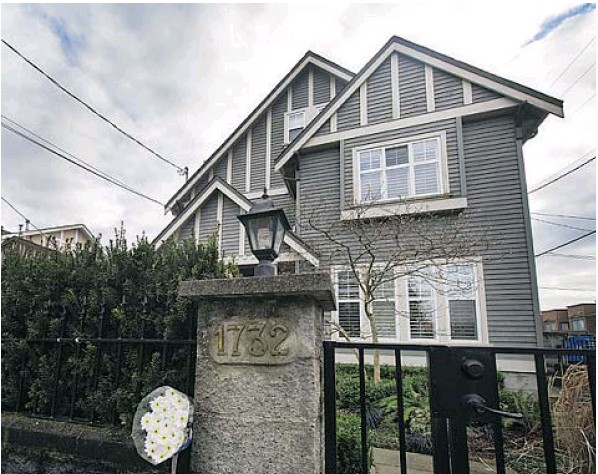$24B deal creates global giant in lenses, frames, eyeglasses
Thomas Mulier and Dan Liefgreen
The Vancouver Sun
French lensmaker Essilor International SA agreed to buy Luxottica Group SpA, the maker of Ray-Ban sunglasses, for about 22.8 billion euros ($24 billion) in stock, combining the largest manufacturer and retailer in eyewear.
Leonardo Del Vecchio, who created Luxottica in 1961 and controls 62 percent of its stock, will be executive chairman and chief executive officer of the combined business, which will be named EssilorLuxottica, the companies said Monday in a statement. Essilor CEO Hubert Sagnieres, 61, will be executive vice chairman and deputy CEO with powers equal to Del Vecchio’s. Essilor shares gained as much as 19 percent while Luxottica rose as much as 15 percent.
Four years after talks began, the 81-year-old Italian billionaire said he’s achieving his dream of combining the two businesses, creating one company that’s strong in lenses, frames and eyeglass retailing. The deal also solves a protracted succession puzzle for Luxottica, which has had difficulty retaining top management, with two CEOs resigning in 2014. Del Vecchio has said he didn’t want to bring any of his six children into the company.
“This operation would be a perfect fit on paper as both groups are leading their respective categories,” said Cedric Rossi, an analyst at Bryan Garnier & Co. “Nevertheless, two main question marks remain at this stage: EssilorLuxottica might face antitrust barriers, and management appointments in newcos are quite complicated.”
The deal is the largest acquisition ever of an Italian company by a foreign buyer, according to data compiled by Bloomberg, and it adds to a string of such takeovers that has shrunk Italy’s roster of multinational corporations. ChemChina bought tiremaker Pirelli & C. SpA in 2015 and the Pesenti family last year ceded control of cement producer Italcementi SpA to Germany’s HeidelbergCement AG. Luxottica is Italy’s fourth-largest publicly traded company by market value.
The companies described the transaction as a combination rather than an acquisition of Luxottica by Essilor. In addition to the two top executives sharing power, Del Vecchio’s Delfin investment company and Essilor will each nominate eight directors for the combined company’s 16-member board and the equity of EssilorLuxottica will be about 50 percent owned by each company’s shareholders.
Luxury Brands
Luxottica makes frames for luxury brands such as Armani, Chanel, and Prada, and is the biggest eyeglass retailer, with chains including Lenscrafters, Pearle Vision and Sunglass Hut. Essilor is No. 1 in lenses, and also has been expanding in eyewear retailing via acquisitions.
The transaction should generate cost savings and increased revenue of 400 million euros to 600 million euros a year within about three to four years, Sagnieres said. The combined company will have more than 15 billion euros in annual revenue. Del Vecchio, Italy’s second-richest person, will be the single largest shareholder, controlling a stake of between 31 and 38 percent.
“This is a merger where they will be able to complement each other and create economies of scale on the supply chain,” said Catherine Lim, a Bloomberg Intelligence analyst. “Luxottica is a licensee of major branded eyewear while Essilor has been more focused on making lenses.”
EssilorLuxottica will be able to overcome antitrust hurdles, because its combined revenue would only account for about 16 percent of the market, Del Vecchio said on a call with analysts. However, the new company will have more than 50 percent of the sunglasses market and be the largest maker of spectacle frames, lenses and ready-made reading glasses, according to Jasmine Seng, an analyst at Euromonitor.
Delisting Luxottica
Delfin will sell each of its Luxottica shares to Essilor in exchange for 0.461 of an Essilor share. Essilor, based in Charenton-le-Pont near Paris, will then begin an offer for the remaining Luxottica stock at the same exchange ratio, with a goal of delisting the Italian company. Mediobanca SpA advised Delfin, while Citigroup Global Markets and Rothschild worked for Essilor.
The bid values Milan-based Luxottica at 47.07 euros a share based on Friday’s closing price for Essilor, 5 percent lower than where Luxottica finished the week. Luxottica had a market value of about 24 billion euros as of Friday, with about 22 billion euros for Essilor.
Essilor shares surged 13 percent to 115.25 euros at 2:45 p.m. in Paris, lifting the value of the takeover to about 53.13 euros per Luxottica share. Luxottica climbed 8.8 percent to 53.90 euros.
Luxury Competitor
Luxottica increasingly competes with large luxury players such as Kering in a global eyewear industry worth about $121 billion last year, according to data from Euromonitor. The company’s expansion into lenses is attractive amid rising consumer demand and as the segment offers high margins, according to Bloomberg Intelligence.
Demand for eyewear is expanding in emerging markets with more than 2.3 billion people in Asia, Africa and Latin America needing optical frames, according to Exane BNP Paribas.
The two companies had been on a “collision course,” Exane said in a note in October as Luxottica moved into lens manufacturing while Essilor advanced into frames and acquired online eyewear retailers. Lens manufacturing will be a big deal for Luxottica as it makes it independent for sun and prescription lenses, it said.
© 2017 Postmedia Network Inc


